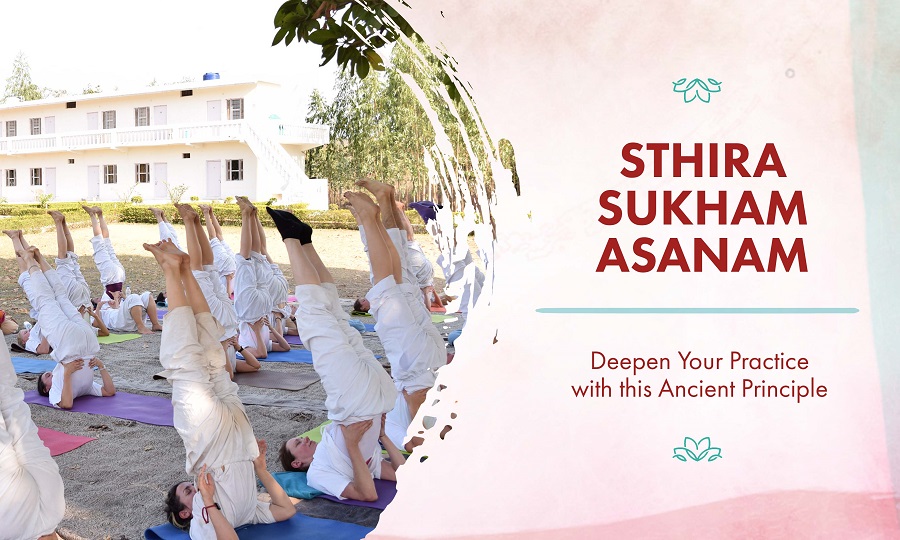Sthira Sukham Asanam – Deepen Your Practice with this Ancient Principle
For centuries the sutra (verse) sthira sukham asanam from the Raja Yoga Sutras of Patanjali has been a guide to understanding the deeper nature of yoga asanas. But due to the lack of detailed explanation in the Patanjali Sutras, often teachers relate this verse to only seated postures as preparation to pranayama & meditation. But this verse is just as relevant to all other yoga postures. In fact, this famous verse sums up the entire concept of yoga asanas.
The Origin of the Patanjali Yoga Sutras
The sutra (verse) comes from the widely popular book “Yoga Sutras of Patanjali”, original title “Raja Yoga Sutras by Maharishi Patanjali”. A rishi is an educated monk who engages in reviving, rewriting the old scriptures, and a Maharishi is their head or director. Around 2200 years ago Maharishi Patanjali, together with his team of rishis, compiled a book to provide an overview of Raja Yoga. This book contains 196 verses and gives a brief impression on the practice and benefits of Raja Yoga. Divided into four chapters, in the second chapter (verse 46) we find the famous line: Sthira Sukham Asanam
Read more: The 8 limbs of Raja Yoga
Why are sutras so vague?
Did you ever wonder why the sutras are so vague?
The simple answer is that they were meant to be vague. The yoga sutras were never meant to provide complete information on Raja Yoga. In earlier times, yoga was a secret and a sacred knowledge. It was only meant to be given to those who deemed worthy by proving their desire for enlightenment and a high degree of discipline and sacrifice.
Therefore, all the yoga books were written to only give a brief overview of the topic. The idea was that if you like the concept, go and find a suitable teacher, prove your worthiness and learn the complete practice from him. The books were carefully kept secret and hidden. Available only through referrals and recommendations.
Similarly, Patanjali did not want to compile a book to give detailed knowledge of Raja Yoga. He only wanted to give a glimpse of it. For example, he only mentioned five Yamas and five Niyamas, whereas there are more than 20 Yamas and Niyamas mentioned in various other scriptures. His idea was to point out what kind of Yamas are practiced in Raja Yoga, not give complete instructions as to which all Yamas are actually practiced. That complete knowledge was to be learned directly from a teacher, not from a book.
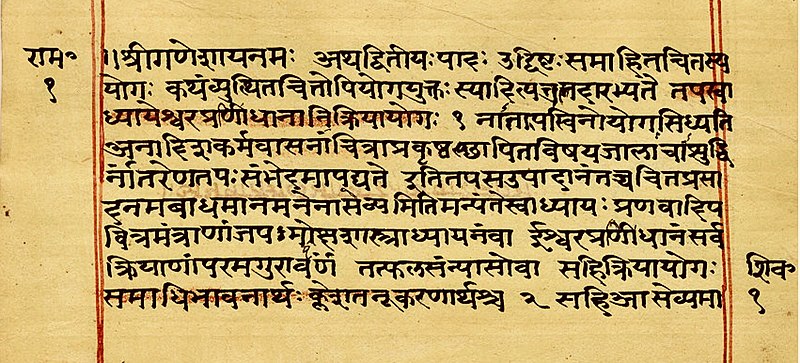
The Meaning of Sthira Sukham Asanam
Sthira – Steady,
Sukha – comfortable,
Asanam – is asana.
So, the sutra literally states that steady and comfortable is an asana. Often you will read the explanation as ‘steady, comfortable pose is asana.” But here is exactly where the interpretation mistake happens: In the original (literal) translation, there is no mention of ‘pose’ in the definition.
This is because asana is not a pose, asana is a state, state of the body and the mind.
So, moving or holding the body in different shapes is not asana. Otherwise, all gymnasts & acrobats should be considered the most accomplished yogis. When a model is holding the pose for the artist, he is not doing asana.
So, when are you doing asana?
When your body and mind are steady and comfortable even when your body is challenged out of its comfort zone, you are in a state of asana. When your mind gets distracted by senses or body starts to struggle because of its sensations like pain or discomfort, you are not practicing an asana anymore and should come out of the pose.
Mostly while practicing yoga asanas, we are in and out of the asana state. That is why it takes a long time of dedicated practice to be able to train the body and mind to be in this state continuously.
The deeper purpose of asanas
Asanas were developed by the monks centuries ago. These monks practiced strict self-control to master the senses and mind. Their goal was to reach the state of Samadhi and ultimately the state of Enlightenment.
These monks used to eat once a day, one handful of food. And drink one handful of water once a day. They used to sleep only for four hours and they practiced at least eight hours of meditation every day.
But due to the sedentary lifestyle (the prolonged stillness due to meditation practice), their bodies were getting ill. Their internal organs were functioning poorly and illness was inhibiting their meditation practice. These monks could not practice regular exercise, swimming, running, etc. because it made them very hungry, thirsty and tired. With their wisdom and insight, they invented asanas to provide exercise to their internal body (organs and glands) while avoiding unwanted effects of the physical exercise.
Therefore, they developed asanas where they would only stress the targeted organs without moving or stressing the unnecessary muscles. They wanted to conserve energy even while exercising their internal organs. They applied what is also known as the principle of “Minimal Action”.
So, the main purpose these ancient monks developed asanas was to keep their internal organs fit and maintain good health. They practice a limited number of gentle asanas. Later this practice was further expanded by Natha tradition monks who began to practice more extreme asanas.
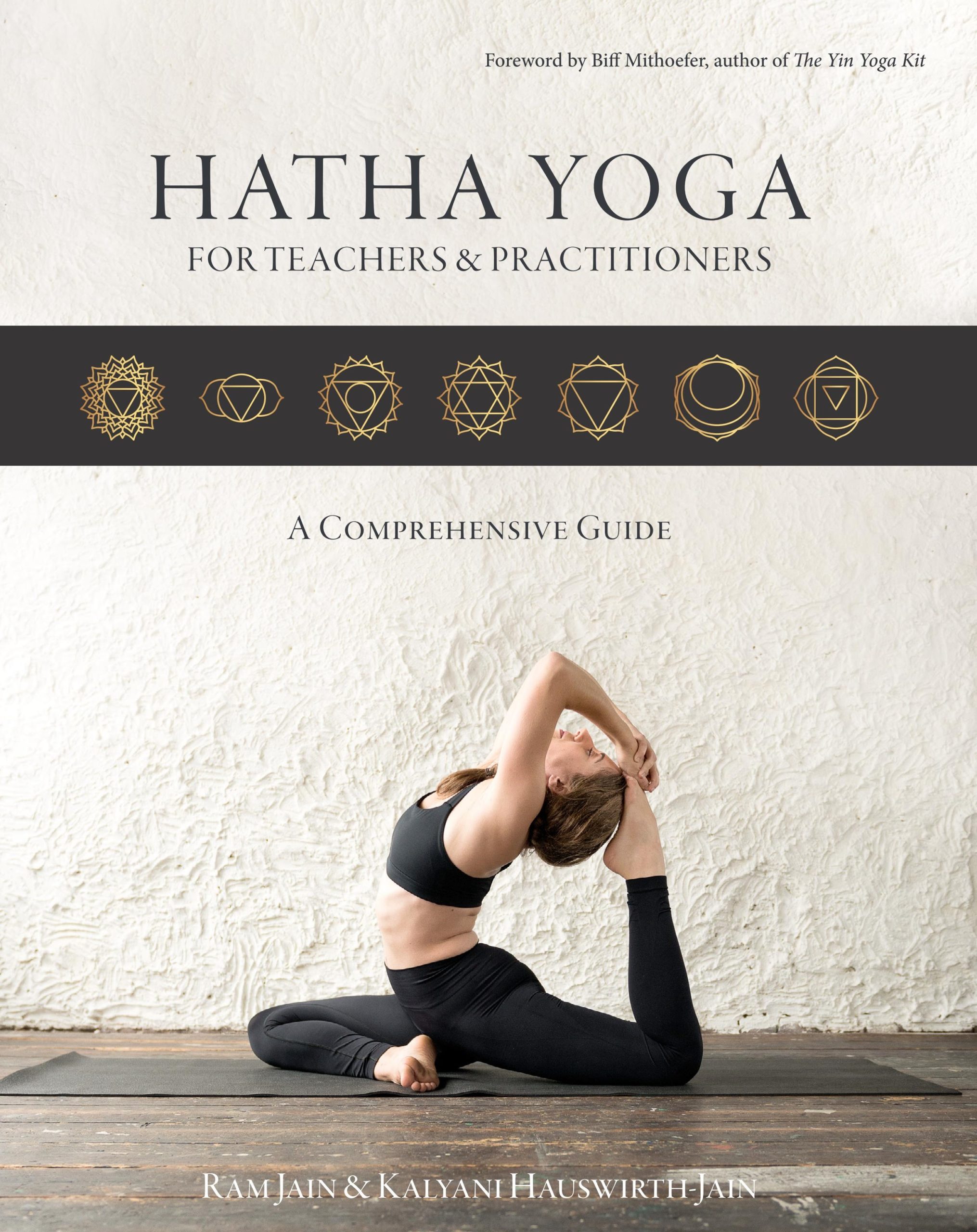
Get a free copy of our Amazon bestselling book directly into your inbox!
Learn how to practice, modify and sequence 250+ yoga postures according to ancient Hatha Yoga principles.
Yoga asanas and the principle of minimal action
This ancient approach to asana practice is in sync with a law of nature, known as the Principle of Minimal Action. An example of the principle is when you try hard to stay on the surface of the water, you sink. When you relax and give up, you float.
It is one of the most fundamental principles of nature, and all of nature acts according to this Principle of Least Action, as it is called in physics. Mathematicians formulated the principle during the first half of the 17th century. They observed that light travels at different speeds through different media and that light always chooses the path that takes the least time. How does the light know which path to take? They understood that nature will always follow the path that requires the least amount of energy and time. In fact, nature aims to conserve energy.
The Chinese also observed the same principle and called it Wu Wei (minimal action). Wu Wei lies at the basis of Tai Chi and Kung Fu. It refers to the cultivation of a state of being in which our actions are quite effortlessly in alignment with the ebb and flow of the elemental cycles of the natural world.
The same principle lies at the foundation of yoga asanas. You practice each asana most naturally when you ease into it with the least physical and mental effort. In this way you remain in sync with your own nature and the large flow of nature all around you. When you practice Hatha Yoga and your body is in a restful and regenerative mode, you are acting according to the most basic and natural principle of the universe. You thus act in harmony with the totality of natural law.
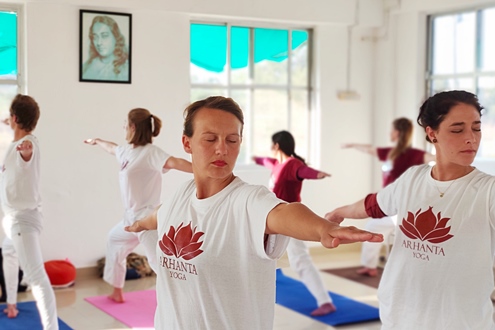
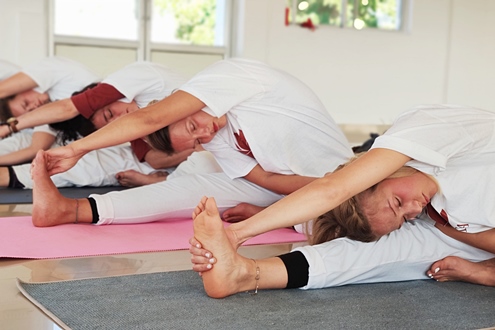
Balancing the Nervous System with Sthira Sukham Asanam
Practicing asanas in accordance with the principle of sthira sukham asanam has an incredibly balancing effect on the nervous system. When the body is balanced, it is in a state of homeostasis. Homeostasis means that there are relatively stable conditions in the internal systems of the body, despite influences from the inner and outer world. The autonomic nervous system maintains this balance.
The parasympathetic and sympathetic nervous system are the two branches of the autonomic nervous system. The parasympathetic nervous system (PNS) brings your body into a resting mode and activates regular functions such as digestion. It is associated with relaxation of the muscles and a slower heartbeat. The sympathetic nervous system (SNS), on the other hand, is also called the action system. When the SNS is active, your body is in fight or flight mode. The muscles are activated, and the heartbeat increases. Internal functions related to restoring and healing of the body are put on hold.
Only one of these subsystems (PNS or SNS) can be active at the same time. They alternate depending on the circumstances. For this reason, long holds during Hatha Yoga practice are essential. Holding an asana with comfort and ease for a certain duration brings you into the rest-and-regenerate mode. Not all asanas are easy and effortless, though. Challenging asanas raise your heartbeat and respiration rates. When followed by a relaxation pose such as Corpse Pose, Child’s Pose, or Crocodile Pose, however, your body learns how to shift from sympathetic to parasympathetic modes. An effective yoga practice involves poses and exercises that cycle through the accelerator and the brake so the autonomic nervous system gets a thorough workout. It is very important for the healthy functioning of your body that you can switch between activation of the PNS and SNS.
In sthira sukham asanam, you learn to alternate between conscious activation and relaxation of your body. Therefore, keeping this principle in mind as you practice, you can effectively balance your nervous system and maintain homeostasis.
How to Apply the Concept of a Steady & Comfortable in your Practice?
If you want to build a house that lasts for a lifetime, you first need to pour a strong foundation. The most beautiful and artfully crafted castle cannot last on a foundation of sand. Likewise, a yoga asana practice needs a strong foundation. This foundation ensures benefits that exceed mere physical toning and bring you into realms of true holistic well-being.
The benefits of a practice built on a foundation of the principle of sthira sukham asanam are manifold. Such a holistic asana practice is a balanced practice because it creates harmony
between the physical, mental, and energy bodies.
To use the meaning of sthira sukham asanam in your practice:
- Focus on a balanced physical state. Asanas should not be practiced when you are sick or experience fatigue. Adapt your asanas if you are recovering from any physical health conditions.
- Practice a stable state of mind. Train your mind to become aware of any thoughts or emotions - they will occur but should not affect the way you practice.
- Avoid injuries and increase the duration and difficulty of the poses depending on your personal progress - you can challenge yourself to go further when you have been able to hold poses in a stable way for a while.
Do not confuse the meaning of sthira sukham asanam with:
- A lack of progress. Of course, it is part of yoga asana to challenge yourself by increasing the duration or complexity of the pose. You can make an effort to do this, but with the principle of sthira sukham asanam in mind, you should never be breathless, in pain, or harm yourself.
- Being rigid or static while holding asana. Although you are trying to find steadiness, you are also practicing awareness of inner and energetic processes. Holding an asana is a conscious and active process that brings you closer to the full experience of yoga.
A common mistake for yoga practitioners is the image- and goal-oriented attitude of perceiving the picture-perfect posture as the goal. We must not forget, however, the basic principle that the asana is achieved naturally, through simple harmony between body and mind. Practicing asana with comfort and steadiness leads to control of the body, mind and the senses, ultimately helping us along on the path to the purpose of yoga: self-realization. Understanding and applying these foundational principles of yoga will help you to advance in your own practice and will result in an overall increase of physical well-being.

Get a free copy of our Amazon bestselling book directly into your inbox!
Learn how to practice, modify and sequence 250+ yoga postures according to ancient Hatha Yoga principles.

